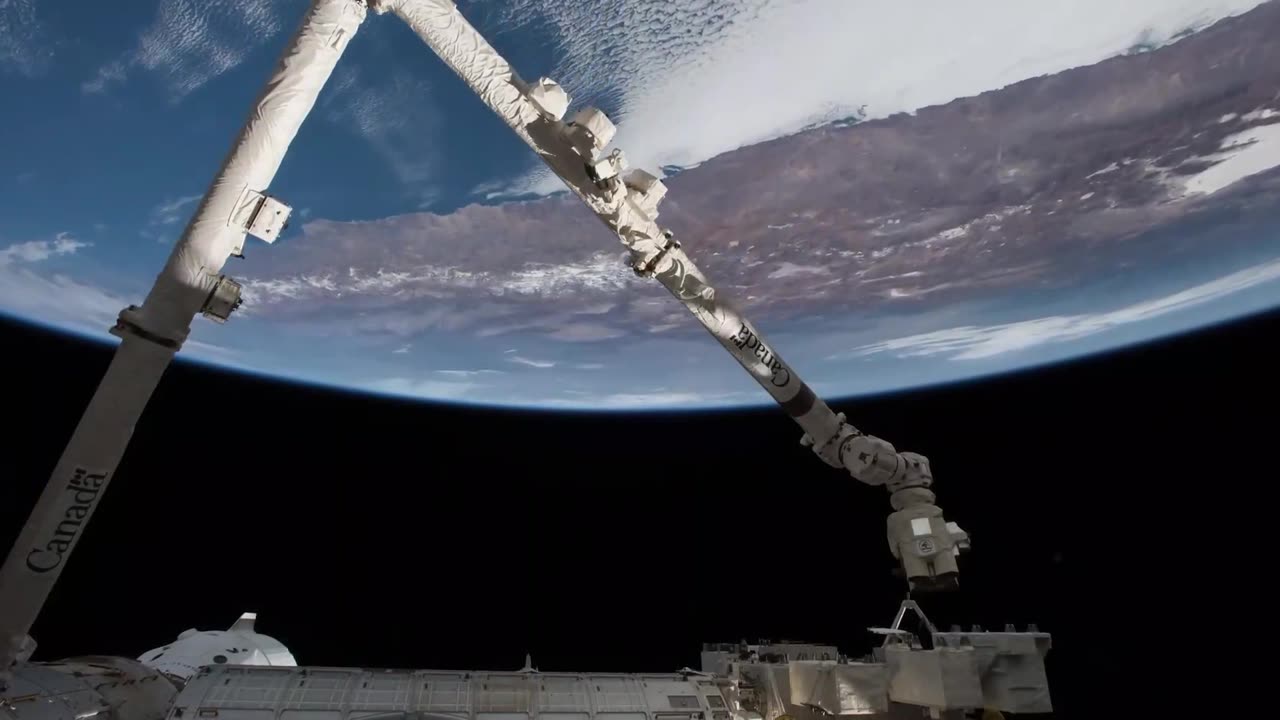Premium Only Content

Earth from space last part
Earth is the third planet from the Sun and is the only known planet to support life. Here are some key facts about our planet:
Size and Composition: Earth has a diameter of about 12,742 kilometers (7,918 miles) and is composed of various layers, including the solid crust, mantle, outer core, and inner core.
Atmosphere: The Earth's atmosphere is a mixture of gases, primarily nitrogen (78%) and oxygen (21%), with trace amounts of other gases like carbon dioxide, water vapor, and argon. It plays a vital role in supporting life and regulating the planet's climate.
Hydrosphere: Earth is often referred to as the "Blue Planet" due to its abundant water. About 71% of the Earth's surface is covered by oceans, seas, and other bodies of water.
Lithosphere: The Earth's solid outer layer is called the lithosphere, which consists of tectonic plates that move and interact, leading to processes like earthquakes and volcanic activity.
Life: Earth is teeming with a wide variety of life forms, including plants, animals, and microorganisms. It's the only place in the universe where life is known to exist.
Geological History: The Earth has a complex geological history, including the formation of mountains, valleys, and other landforms over millions of years.
Moon: Earth has a single natural satellite, the Moon, which orbits around it and affects phenomena like tides.
Climate and Weather: The Earth's climate and weather patterns are influenced by factors such as the Sun's energy, ocean currents, atmospheric circulation, and greenhouse gases.
Ecosystems: Earth's diverse ecosystems range from deserts and rainforests to polar regions and deep oceans, providing habitats for a wide array of species.
Space Exploration: The study of Earth, known as Earth science, encompasses a wide range of disciplines, including geology, meteorology, oceanography, and more. Additionally, space agencies have sent satellites and spacecraft to study Earth from space.
-
 5:06:15
5:06:15
AirCondaTv Gaming
21 hours ago $39.02 earnedOnce Human - New Year. New Meta. Happy New Year!
149K15 -
 1:00:37
1:00:37
Bright Insight
10 days agoOlmec Heads are Evidence of Lost Ancient Advanced Civilization
144K229 -
 13:43
13:43
Cooking with Gruel
2 days agoCreamy Saffron Risotto
126K24 -
 18:38
18:38
DeVory Darkins
1 day ago $44.20 earnedTrump Makes HUGE Announcement that may spark GOP Battle
150K89 -
 2:13:05
2:13:05
The Nerd Realm
20 hours ago $13.09 earnedNew Years Eve! Fortnite Hunters w/ YOU! Creator Code: NERDREALM
105K6 -
 11:04:44
11:04:44
FusedAegisTV
1 day agoNYE Eve! - 2025 Incoming 🎉 - 12hr Variety Stream!
158K7 -
 1:18:52
1:18:52
Awaken With JP
23 hours agoSomehow The World DIDN’T End This Year! - LIES Ep 72
190K169 -
 1:19:34
1:19:34
Michael Franzese
21 hours agoWhat 2024 Taught Us About the Future?
148K37 -
 1:48:09
1:48:09
The Quartering
22 hours agoBird Flu PANIC, Sam Hyde DESTROYS Elon Musk & Patrick Bet David & Woke Witcher?
152K111 -
 4:47
4:47
SLS - Street League Skateboarding
3 days agoLiz Akama’s 2nd Place Finish at SLS Tokyo 2024 | Best Tricks
70.4K6